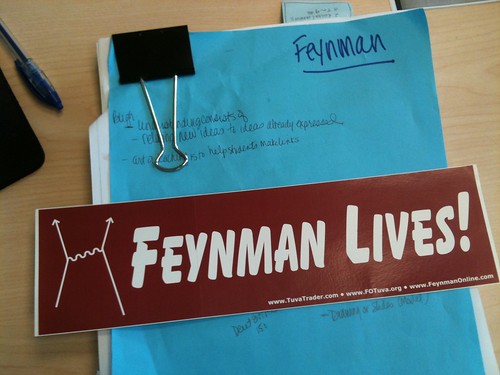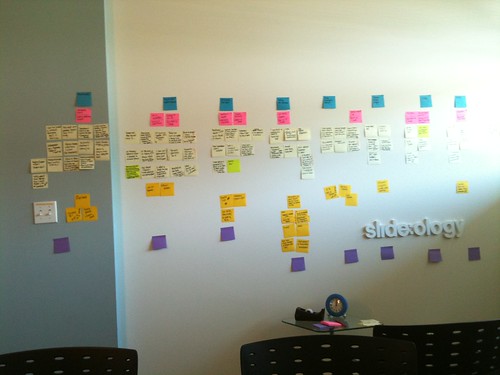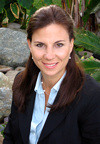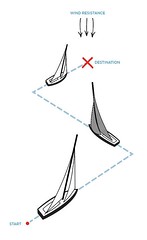Q: Your recent book on presentation design, Slide:ology, was a runaway hit. What made you decide to follow that up with a book about storytelling?
A: When I wrote Slide:ology, I thought that the most pressing need in business communication was the visual display of information (slides). So I wrote Slide:ology which addresses that. Once I started to see the principles applied in organizations, the slides looked great but it was really the content that was a mess. Beautiful slides created to accompany disastrous content is like dressing up a pig. My new book Resonate deals with the pig. Slide:ology was easier for me to write. It was like capturing what my organization had done for 20 years. The material easily poured from my head. With Resonate, I needed to do more homework and research. Many books exist in business around story but not as applied to a presentation. So I studied literature, cinema and even rabbit-trailed around topics like psychology, philosophy and music. After many hours of study, a great book poured out—from my heart though, not my head.
Q: There’s an image in the book that resonated with me. It depicts a sailboat tacking into the wind, an image that represents the presenter’s challenge to move their ideas against the prevailing status quo. What’s the story behind this image? Can you remember how you came up with the idea?
A: It’s funny you’d ask that because I got emotionally attached to the concept myself. Presentations are persuasive which means you’re trying to move an audience from one place to the next. I wanted to find a metaphor that moves back-and-forth like the presentation form sparkline does yet propels forward. Sailing was the most obvious metaphor. When I first developed the presentation form I’d sketched the shape zig-zagged (and that’s where I came up with the idea) instead of pumpkin-toothed as it is today:
I’d always envisioned the sparkline as moving back and forth as a zig zag but it was confusing so I changed the sparkline to pumpkin-tooth shaped, so the sailboat had to be used for a different metaphor. One of the guys on my content team tied in the concept of wind resistance as a parallel for audience resistance. Interestingly, when a sailboat is sailing against the wind, if the sails are set correctly to capture the wind resistance, a physics phenomenon happens and the boat can sail faster than the wind itself. That can happen with a presentation. Insert the ways your audience might resist and you’ll get them to adopt your side quicker.

Q: You describe the book as, at least in part, a research project. What process did you follow when writing the book? How did it work for you? Would you do it the same way next time?
A: My office was a mess while I worked on this book. I had books and printouts scattered all over the floor and every surface of my office. Plus I had hundreds of pages taped up on the walls. I was very mad-professor-like (see video below):
Because the book covers fundamental literature principles, I felt like I needed to study many topics deeply to make sure it was accurate and to avoid it getting challenged by communication professionals who’ve studied speeches for years. So I wanted to dig very deep on each into the subject matter to make sure I covered all my bases which took a ton of time. Honestly, it feels like a huge doctoral project. I used a lot of paper during this process, unfortunately. I’m very tactile and wrote and highlighted on paper. As I studied and read, various themes started to surface. I would binder-clip packets of my research together by topic and make a cover page of bright blue paper:

I built the first pass of the outline in PowerPoint. Each spread of the book has one title (message) and supporting text and graphics. Similar to a slide. So I print and re-print my deck. Posted, rearranged and re-posted it on my wall until the structure was sound. It was just like how we used 3x5 cards to write papers in college. I enjoyed my creative process. Many people thought it looked chaotic but I had a blast. I would definitely use the same creative process.
Q: You talk a lot about the presenter as mentor, like Yoda or Mr. Miyagi from the Karate Kid, the “guide on the side” who helps audiences come to conclusions on their own. Yet presenters often are expected to take the role of “sage on the stage,” the center of attention. It’s hard to picture Yoda or Mr. Miyagi on stage giving a dramatic presentation. How do you suggest that presenters can reconcile these two, seemingly contradictory, ideas?
A: That’s a good insight, Dave. The reference to mentor doesn’t dictate that they are low energy and are boring on the stage. I’m trying to get presenters to take on a change in mindset and a new stance in their role. The audience determines whether your idea is successful and applied, so they are the hero of your idea. The role of the mentor in movies and mythology is to bring a magical gift, tool or ability to get the hero unstuck. When was the last time you sat through a presentation and felt you received any of that? Besides, if Yoda needed to deliver a formal presentation he would be awe-inspiring I’m sure.
Q: You spend a lot of time talking about using sticky notes to map out presentations. Why do you think this is important?
A: Sticky notes work great for generating ideas, filtering them down and then arranging and rearranging them until the concept and structure are sound. Great structure plays a critical role in how digestible and insightful your findings are.

Q: Design geek question: Both Slide:ology and Resonate are large-format books packed with full-color images. And they’re square in shape! You don’t see square books very often. What made you choose this particular design for your books?
A: I envisioned both my books as reference books that people would want to lay open on their desk. Traditional 5x7 books don’t lay flat like that. Since I work in presentations all day, the open spread of the square books feels more similar to a slide-format and I’m stuck in a groove of writing one complete thought per page. The down-side of the wider format is that airport bookstores are hesitant to carry the book because it takes up too much shelf space. Bummer.
Q: Has your book-writing journey resulted in any learning that changed the way you approach your work? If so, what did you learn and how has it changed your work?
A: If you had told me three years ago that I would write books and enjoy it, I would laughed and called you crazy. Getting a book done (especially a visual book) takes determination and commitment. So it takes a fire in your belly and daily (and nightly and weekendly) discipline to complete a book. I discovered a few things about myself along the way. I found my writing sweet-spot. I always thought I was a night person, but come to find out I get my best work done between 5 a.m. and noon. Now I block every morning to get my brain-work done. In addition to a new way of working, I also discovered that I’m a systems thinker. I get pretty energized when I find patterns and connections that no one has seen before.
Q: If there’s one thing you hope people will take away from Resonate, what would that be?
A: I think that everyone is capable of changing the world (maybe not the entire world but at least their own world). Some of the greatest ideas have remained concealed because someone wasn’t brave enough or committed enough to communicate it well. I’m hoping that Resonate gives them a new mindset and guidance to communicate their ideas well so they’re adopted and make the world a better place.
If you want to buy either book I've made handy links for you right here. Highly recommended!
If you would like to see more interviews like this please leave a comment and let me know. Thanks!
Keep in touch! Sign up to get updates and occasional emails from me.


3 comments:
This is sooo reassuring. This resembles - o0ps sorry - resonates with my natural way of working, which seems in stark contrast with my autistic need for clarity. But science has recently found that our memory is virtually organised, mimicing 3D space. So what can be smarter then using your real space as an external memory.
This interview added new perspective and insights into the book, specially how and why it was made. Keep up the great job!
Dave, thanks for the interview. You asked great question!
Nancy
Post a Comment